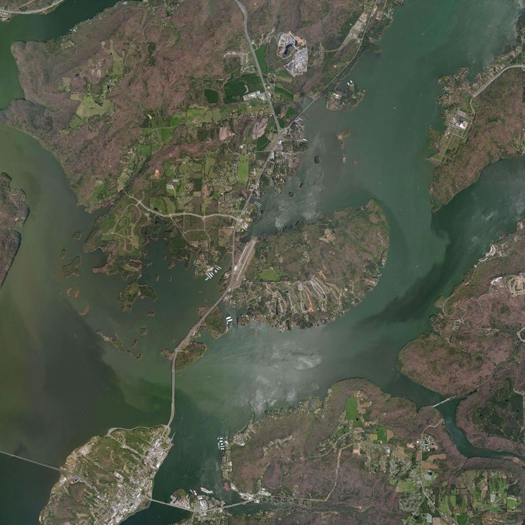
[Lake Guntersville, Alabama’s largest lake, which was created with the construction of the Guntersville Dam by the TVA in the late 1930’s.]
At Places, Shannon Mattern reviews various practices which she collectively terms “infrastructural literacy” projects, including “touring, collecting, and documenting infrastructure” (the Los Angeles Urban Rangers, for instance), “sensing infrastructure” (Nick Sowers’ Soundscrapers), and “playing and performing infrastructure” (Smudge Studio’s Repository: A Typological Guide to America’s Ephemeral Nuclear Infrastructure).
While this is not the best quote to capture the full intent of the article, I was particularly fascinated by a short passage near the beginning quoting from Kevin Lynch’s Good City Form:
In one of his last books, the planner Kevin Lynch suggested that the landscape, through “graceful land management,” might open itself up to scrutiny and accounting. Planners might ensure that the “inner workings” of various “functional element[s] … are there to be seen if one is interested.” More specifically Lynch envisions “guidebooks to the sewer system, with instructions on how to read the season and the time of day by watching the flow. Signs, obscure marks, the traces of activity, listening devices, diagrams, remote sensors, magnifying glasses, slow-motion films, periscopes, peepholes — any of these may be used to make some process perceptible.”
Two fascinating things there. First, the idea of the seasonality of infrastructures — that a sewer system has an autumn, for instance — is quite accurate, but not entirely intuitive, perhaps because of the tendency to read infrastructures, like other artifices, as not-nature. Recognizing that infrastructures have seasonal and daily rhythms to them might be a useful clue not only to their utilitarian management, but also to the development of an infrastructural aesthetics (and, related, to understanding the infrastructural vernacular). Second, Lynch’s list of modes for direct engagement with infrastructure — particularly, of elements which might be included during the design of infrastructures to enhance “infrastructural literacy”: “signs, obscure marks, the traces of activity, listening devices, diagrams, remote sensors, magnifying glasses, slow-motion films, periscopes, peepholes”, which, of course, calls to mind the obscure markings that are actually used to describe the subsurface presence of infrastructures. It also leaves mammoth wishing for a designer or two putting the kind of effort into linking humans to infrastructural processes and flows through responsive systems that designers like the Living and Bradley Cantrell have put into such efforts with ecologies. (This has probably already been done and I’ve just managed to miss the examples.)
Elsewhere, Alan Wiig responds to Mattern’s article with an inversion of the premise, considering “infrastructure as a destination for tourism in and of itself”, via the example of the recreational use of reservoirs:
In the American West, a common example of this is the use of large water reservoirs for recreation: boating, jet skis, fishing, picnics, hiking and cycling, camping, and so on. Water that comes out of the tap downstream acts as sporting or entertainment when retained behind a dam for a time…
Unlike much of the work discussed in the Infrastructural Tourism essay, reservoirs are big, visible reminders of the reach of urban water systems, even if they typically are found far out in the hinterlands, out of sight from the population centers [they serve].
Having spent a good portion of my life in the American South, where the vast majority of inland recreational water use takes place on reservoirs owned by states and power companies, I’ve often wondered whether this dual role is perceptible or largely invisible. If the latter, how strange.

